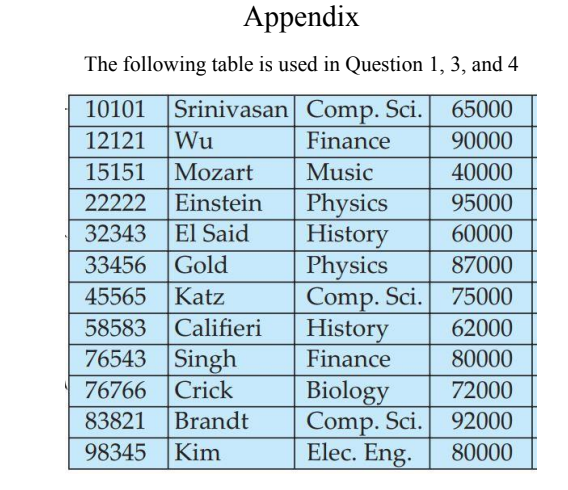Question
I need this answer in 20 min. Please help me Consider a relation R(StudentNo, StudentName, Program, CourseNo, CourseName, InstructorNo, InstructorName, InstructorLocation, Grade). In this relation,
I need this answer in 20 min. Please help me
Consider a relation R(StudentNo, StudentName, Program, CourseNo, CourseName, InstructorNo, InstructorName, InstructorLocation, Grade). In this relation, each student will have a unique StudentNo which is the primary key for this relation. One student may be enrolled to only one program but can be registered multiple courses, which results in having multiple values in a single column for some tuples. As a result, the relation R did not satisfy the minimum requirement to be in 1NF normal form. Answer the Question 1 based on the relation described above:
1. a. Decompose the relation R into two tables by separating the student information and course information so that it satisfies the requirement of 1NF normal form. Find the primary key for both tables. b. Analyse the tables created in Question 1, and check whether there is any partial dependency or not. If yes, decompose the tables to remove the partial dependency, so that the relation belongs to a 2NF normal form. c. Determine whether the table designed in Question 2 is in 3NF or not. If not, perform the necessary decomposition to make it into 3NF normalized form.
2. Consider a relation X(A, B, C, D, E) having the following functional dependencies: AB C, D, E D A Determine whether the relation is in BCNF or not. Justify your answer.
3. Consider the table provided in Figure 1 in appendix. Illustrate how dense index and sparse index can be created based on the last column of the table. Justify the necessity of sorting the tuples based on the last column while creating sparse index.
4. B+ tree is a widely used data structure for maintain indexing in database. Create a B+ tree based on the values of the last column of the table provided in Figure 1 in appendix. Insert the elements in the order of their appearance in the table.
5. Illustrate with a sample schedule, how deadlock and starvation can happen while allocating resources for transactions. Provide solutions for preventing deadlock.
6. Evaluate the necessity of maintaining ACID properties of a transaction with the help of an appropriate example.

Step by Step Solution
There are 3 Steps involved in it
Step: 1

Get Instant Access to Expert-Tailored Solutions
See step-by-step solutions with expert insights and AI powered tools for academic success
Step: 2

Step: 3

Ace Your Homework with AI
Get the answers you need in no time with our AI-driven, step-by-step assistance
Get Started


